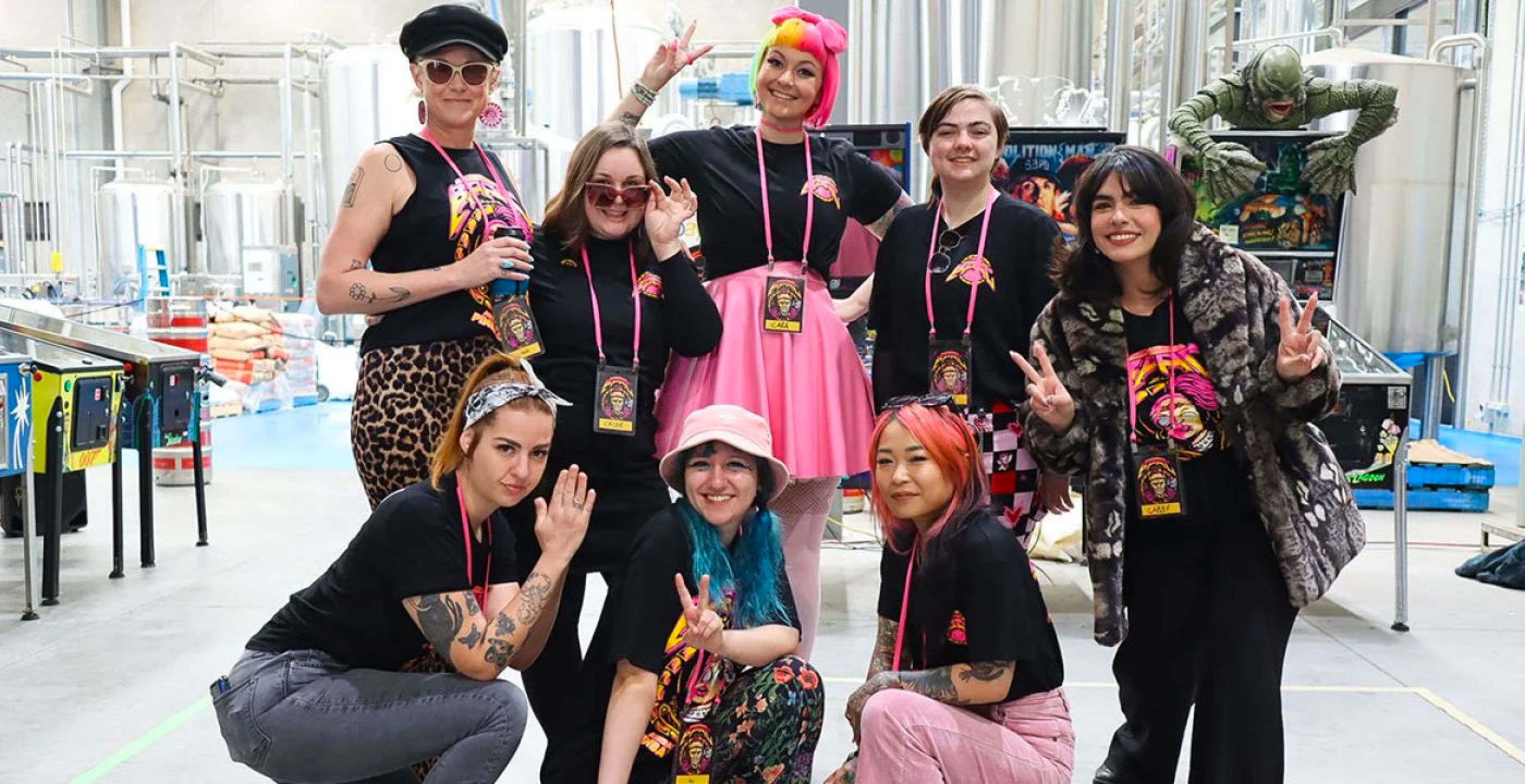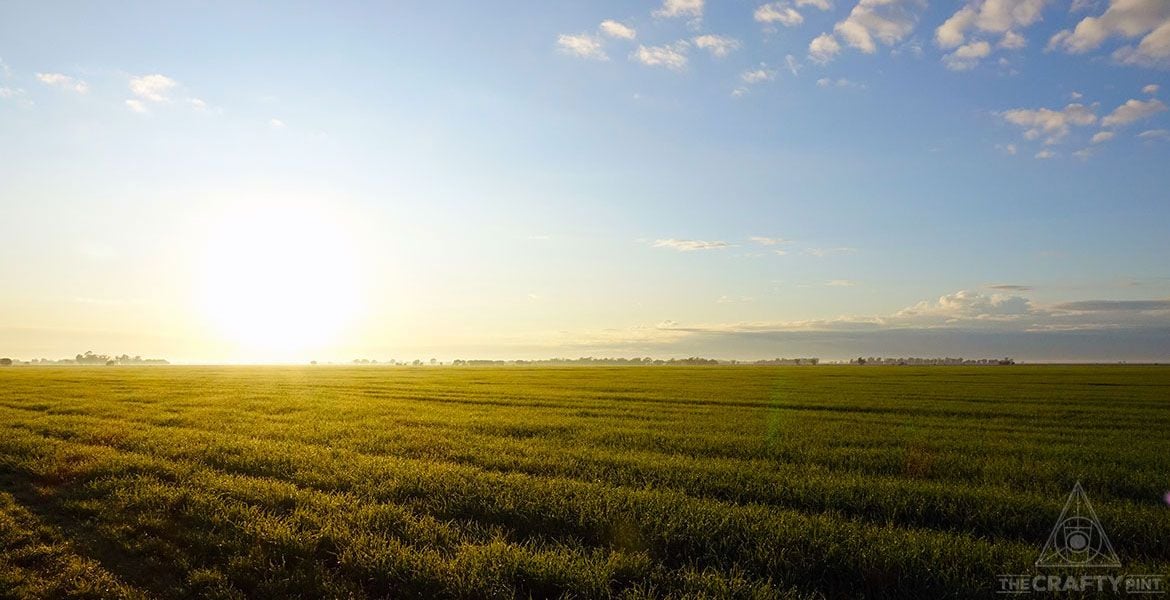Craft beer has been around for many a year now, and there's much about a maturing industry that makes it a better place than it was in the earlier years, back when you'd hear people using terms like "boutique beer" or "microbrewery" as much or more than craft.
There are more breweries, a greater focus on quality, sustainability and innovation, more opportunities for training and education, and more businesses on hand to help support and supply the local industry with the products they need.
But as many craft beer drinkers – the early adopters and their mates they converted to the cause – get older, maybe drinking less and visiting fewer breweries, a common question can arise: is the industry doing enough to connect with the next generation of drinkers? Or appeal to Gen Z as an industry in which they might want to work?
For many years, those who started to explore the world of pale ales and porters might have been attracted to the industry by a desire to drink something different from the macro-lagers that dominated the market, but if your dad drinks Pacific Ale or has a fridge full of XPA, there's a good chance opting for craft beer becomes about as wearing skinny jeans.
Or, to borrow a couple of terms from Gen Z: as craft beer matures, is it becoming cringe or cheugy?
Craft beer's inability to connect with Gen Z compared with the industry's success with Millennials was raised by the Brewers Association's chief economist Bart Watson during this year's Craft Brewers Conference in the US, which you can read about here. Sure, the priority for many young adults wanting a drink has tended to be more focused on getting the best bang for their buck, and craft beer certainly isn't designed for that. But, with the older members of Gen Z born in the mid-1990s, many are working full-time now and, as they become more boujee, you'd think many would move towards craft beer in the ways Millennials did before them.
So why is it that many brewery owners, reps and others in the industry can be heard voicing concerns that newer legal-aged drinkers aren't drinking, or, if they are, they aren't drinking beer?
Does craft beer have much to worry about? And if the industry wants to connect with more Zoomer drinkers, what does it need to think about?
As dangerous as it is to talk about any generation as being homogenous, particularly when you realise Scott Morrison and Eric Bana are the exact same age, let’s do just that anyway, shall we?
The Past & Future

Dulce (Ivy) Macario certainly loves craft beer and has long been passionate about how beer brings people together, both in the here and now and with our past.
“It connects us to this past that’s really rich,” she says.
“Here’s me in the year 2023, with my blue hair and drinking it. You wouldn't have guessed some women in Germany made some recipe that would blow up but it did.”
Ivy works at Brisbane’s much-loved Netherworld, a venue which brings craft beer, arcade, board and just about every other type of game together under one inclusive roof. She thinks part of the reason craft beer isn’t always appealing to newcomers is due to a level of gatekeeping within the industry, where those who have worked in, or consumed, beer for a long time think they know everything about it.
She speaks from experience too: despite having worked in multiple craft beer bars and studied to learn more about the drink she's so passionate about, she’s often dismissed for no reason other than she's a 25-year-old woman.
“People do get a bit shook when I say I’m interested in beer,” Ivy says. “First of all, there’s still a big struggle with just women in general, no matter what age, where they don’t really take us seriously.
“But, even with some the best people I’ve ever worked with, if I even mention that I’m 25 and that I like beer, they don’t think those two things can coexist.”
As a result, she often feels the need to act older, which seems a little unfair given what she’s seen on the other side of the bars in which she’s worked.
“I have to kind of act a little bit more mature, just to be taken seriously in these spaces, when I see people – especially men – kind of get away with acting like children even at the age of 40.”
Walk into Netherworld and you’ll generally be met by a mix of people of all ages, and Ivy continually gets a thrill from introducing younger drinkers to craft beer. There's joy to be had in presenting newcomers with fun sours or something quite removed from beer to help break down someone's established belief that beer isn't for them.
“A lot of people are able to put their defences down a little bit when they drink something a little bit silly," she says.
As for solutions, Ivy feels more could be done to make sure breweries and bars look for ways to reach out; there are plenty of ways to do it, whether through connecting beer to pop culture like Netherworld does so well, or the run club at nearby Range Brewing that shapes a community of all ages and ends with a delicious beer.
“I think it starts with having the spaces for them to actually be excited about it,” she says. “And not just be, ‘Oh, beer – I associate this with my dad or my uncle or just old men in general.’
“That’s not going to achieve anything for the future.”
It's not easy to reach out across the generations, of course, with the industry's use of social media, to give an example, something of a mixed bag. Ivy can easily point to Instagram posts or new beers that the brewers behind them might think connects with younger people but are quite clearly created without any input from anyone in the demographic they're trying to reach.
“You can tell it was made by people in their 30s, 40s or 50s, who are like, ‘Let’s try and get some engagement with the young people.'"
It's a point Ivy returns to multiple times: if you want to appeal to a younger audience, then you need younger people working with you.
“You need to hire these people and be able to actually ask them what they are looking for and what they want,” she says. “You want to have the most diverse team ever because, as soon as you do that, the better it is for any company. I mean studies have shown that time and time again.”
What Matters To Gen Z?
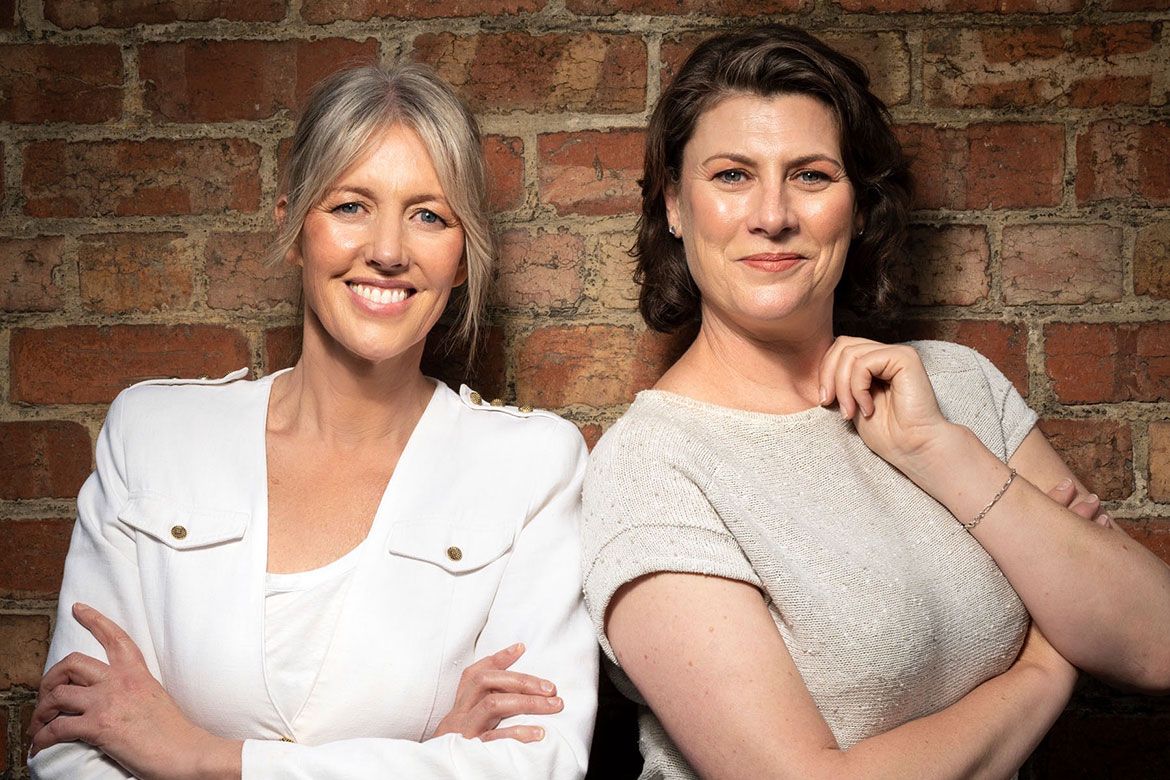
At Beer Matters, the topic of Gen Z and craft beer has come up through their research into consumer preferences. The business that delivers beer industry insights was launched a few months ago but, while it’s new, it's the brainchild of experienced craft beer industry experts: Kirrily Waldhorn, also known as the Beer Diva, and Sophie Goldsmith. As well as being passionate about indie beer, both have data-driven backgrounds: Kirrily worked in the insights team at Lion while Sophie has enjoyed a career in forensic science.
They built Beer Matters to collect, collate and verify data from a range of sources, ready to be provided to indie breweries in a meaningful, useful way. It means they’ve looked at areas including online shopping, different demographic groups, and no and low alcohol.
Sophie points to a range of ways in which their research has suggested those in Generation Z are different and, as a result, why breweries need to consider carefully how they're connecting with younger drinkers.
“We need to talk about craft beer differently to this generation,” she says. “We can't just use the same way that we have spoken about craft beer and expect it to work out: it needs to look different and to be different.”
Kirrily adds that connecting with any different customer group requires you to understand who they are and, at least at times, talk to each in a manner to which they can relate.
“It’s about really leveraging and using your database,” Kirrily says.
“So start segmenting it, start sending out different messages to these different generations that are going to appeal to whatever makes them tick as well.”
While Zoomers are by no means the largest consumers of craft beer, they’re fast becoming the people with the largest purchasing power, according to Sophie. They are also particularly brand loyal, which might be music to the ears of brewery owners who have long complained about the promiscuity of modern craft drinkers.
“It's really important to the brand of craft beer that we get these consumers on board,” she says. “If we can get them into craft, they’re loyal and great brand ambassadors.”
Or, to quote Ivy: “It’s best to cater for us because we have jobs, we have money, we want to spend money, why not spend it on beer?”
Given Zoomers are digital natives, a brewery’s online presence matters, whether that's through their use of social media or operating an online store that works and is easy to use. At the same time, having grown up online and surrounded by technology, Zoomers are also acutely aware of marketing, particularly when it’s paid for, and prefer recommendations from peers over something direct from influencers.
“They rely heavily on online communities and peer reviews to make the purchase,” Sophie says.
“One of the things we talk about is authenticity; they’re not so much into influencers, they want authentic recommendations.”
In other words, it should be no cap.

Fortunately for many craft breweries, they’re already doing a few things that appeal to many Gen Z shoppers: they’re small, often hyperlocal, and many brew with sustainability at the forefront of their minds and sometimes central to their story.
“They care about actions, not attributes,” Sophie says. “They have a strong sense of supporting local because part of their thing about local is they want to be seen to be making a difference.
“They're much more about what action they can take to make a difference.”
Gen Z’s connection with craft beer and local breweries wasn’t just part of Bart Watson’s presentation during the Craft Brewers Conference in America. In the presentation "Where Gen Z Is Taking the Beer Business", marketing adviser Michael Kallenberger broke down data from the 2022 Kantar MONITOR, which is the longest-running study of Americans' attitudes, values, and behaviour.
He pointed to data that initially suggested a preference for buying beer from local breweries was declining.
“This number, I think, is a little scary,” he said. “We see that 17 percent of Millennials agree that they try to buy from small or local companies as much as possible, but only ten percent of Gen Z do.”
However, Michael said that when asked about companies that make efforts to invest in their local community, it shoots up to 26 percent; and when asked about businesses that offset their impact on the environment, 21 percent of respondents say that matters.
“The way I interpret this,” Michael said, “is Gen Z is telling us it's not enough to be local, it's not enough to have your brewpub or taproom down the block from me – to just be physically local. They’re saying, ‘I want you to put up, I want to see that you're investing.’
“Being local has always been important in craft beer. And now we need to be proactive, and that involves showing your commitment by spending money and your actions.”
It requires breweries to think thoughtfully about how they’re talking about beer, where they’re trying to reach drinkers and what they’re posting. Beer Matters’ research has shown that, beyond caring deeply about the climate, they’ve grown up in a world that’s more financially tenuous than that experienced by Millennials, something that makes them more risk adverse and even more serious from a younger age – even if they love memes and have a great sense of humour.
Ivy describes the feeling of a deep-held desire to reshape the world they're inheriting, and to reform any industry they believe needs it, including beer.
“We know that the world's a little bit doomed, and we know that we're trying really, really hard. But we also think that, like, every second might count,” she says.
“We don't know what's going to happen in the future. And I think it's time for us to occupy as many spaces, and learn and do as many things as possible, and then, you know, conquer the world and maybe try to fix the ship.
“I think it’s worth shaking the foundations a bit because there is too much of craft beer that’s actually suffering for not having that much of an engagement from us. People are getting older. We are technically the future; I don't know how much future we have, but we are the future."
The Moderation Generation?
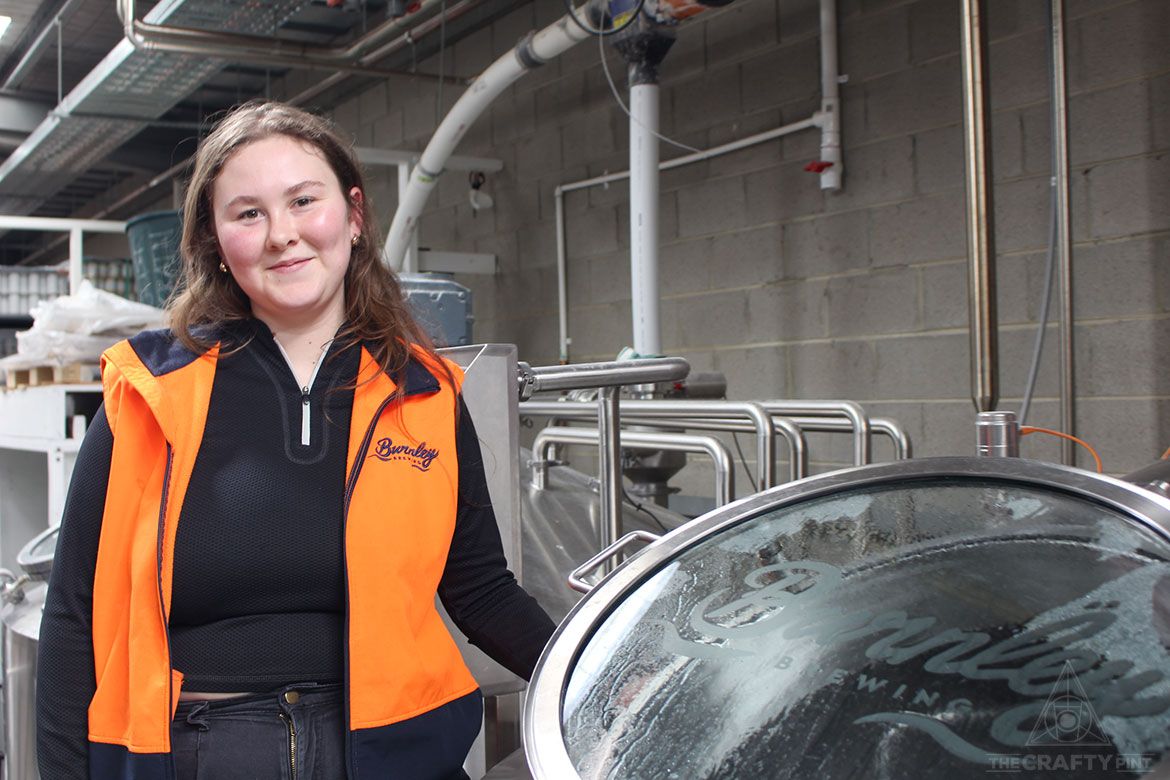
When talking about Gen Z, the topic of moderation and a decision to turn away from beer completely invariably comes up. Whether it’s due to a better understanding of the health impacts of drinking in excess, the weariness that can come with, having your drunk moments shared online or a generational feeling of risk aversion, young people appear to be driving abstinence from booze.
Given the oldest Gen Z drinkers have been able to buy booze legally for a decade now, Sophie says there's quite a bit of study around how they drink and how that's been reshaped more recently.
“The research has found that more than any other demographic group, the pandemic has changed the drinking habits of the cohort,” she says. “They were on track to be the generation of nondrinkers more so than any before them.”
Before 2020, Gen Z consumption of beer was down 20 percent compared with Millennials but, since that year, consumption has gone up by 35 percent. Having said that, Sophie still points to how health-conscious the generation is, with Gen Z and Millennials both driving interest in no and low alc products, and the former also driving interest in seltzers.
At Netherworld, Ivy sees non-alcoholic beers as playing an important role in craft beer’s future, both for younger drinkers and those who are older and looking to slow down.
“I don’t think that’s just for Gen Z,” she says. “But because we have more knowledge about alcohol, there is some moderation happening. But there is still binge drinking so take that with a pinch of salt.”
It’s a view reflected by fellow Zoomer, Eloise Linkson (pictured above).
“I think it's become more acceptable to be completely sober – and more common,” she says.“I can’t speak for everyone but there’s a lot we don’t do in moderation."
Indeed, if you’re wondering if teenage and university-age binge drinking has dried up, look no further than BORGS, or BlackOut Rage Gallons. The American trend sees partygoers mix vodka, water and electrolytes, with the idea behind the last of those ingredients will combat any hangovers (spoiler warning: they don’t). They’re typically consumed all night and given pun-heavy names, like BORGan Freeman and Greta ThunBORG.
“Borgs are so economical, I love that,” Eloise says. "I think there's always just going be a new way to drink, just like how vaping is a new way of smoking.”
Kirrily says to connect with younger drinkers, breweries also need to assess their core range and think about what beers appeal to them. High-income homeowners might be looking to indulge in something more expensive but younger drinkers might be seeking something else, and indie breweries can still be well-placed to offer a good choice. (Coincidently, the beers featured our in recent Budget Busters blind tasting might fit the part.)
“We really need to shift how we're talking about beer to this consumer group," Kirrily says. "They are the future, they’re going to have the highest purchasing power. We can’t just go, ‘Oh, we’ve lost them to seltzer,’.
“We haven’t yet. It’s about being really cognisant of the fact that it needs to be an easy entry point for them. Don't talk to them about the 8 percent double IPA in 440 cans, it's just not going to resonate with them."
What's Missing?
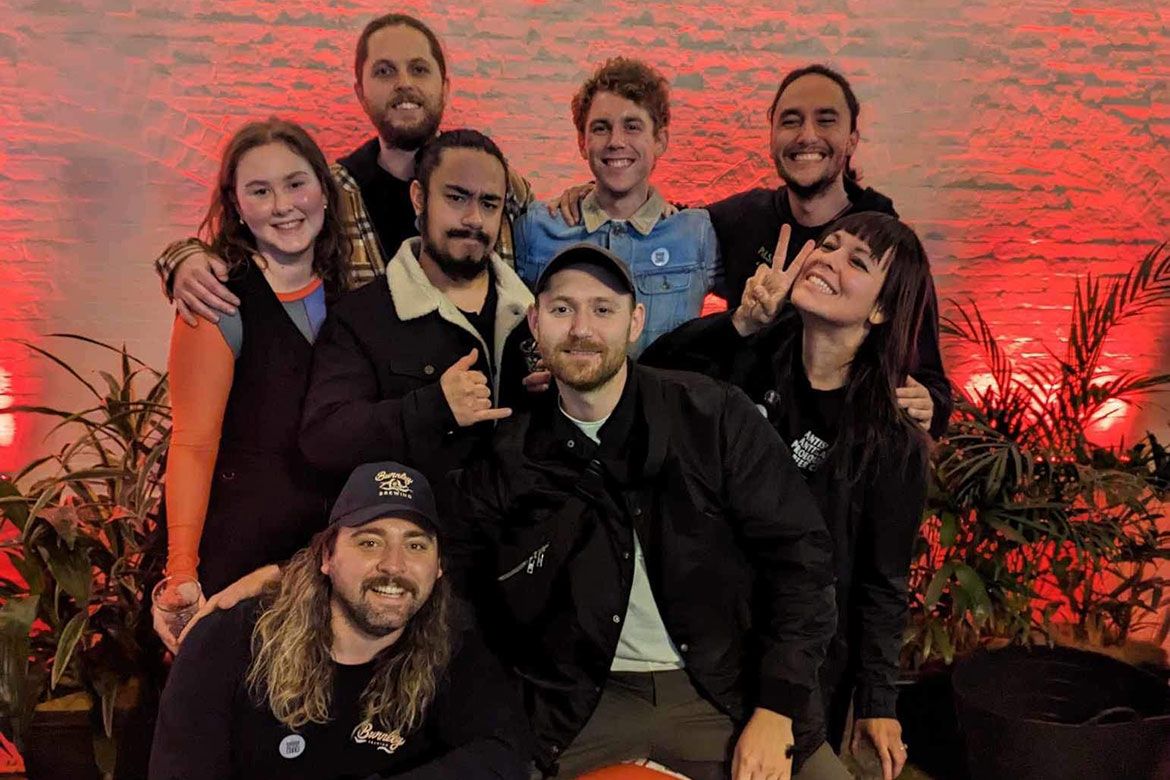
Eloise wonders if the size of many beer cans could be putting off younger drinkers. Beyond younger drinkers looking for a more affordable option, she believes craft beer’s fondness for tallboy tinnies might drive away some people and points to the success of Blackhearts & Sparrow's house beer: an Italian-style lager that comes in 330ml tins.
“A 440ml can isn’t really the go to,” she says. “I think that’s why Birra goes so well; they’re little guys and they’re really sessionable. It’s so much easier to make a decision for something like that that’s sessionable and not a whole meal.”
Eloise, who brews at Burnley Brewing and is better known as Weezy in the industry, also wonders how good a job indie beer is doing at promoting itself. She doesn’t see any cut-through of the Independent Seal among her age group, and says there’s plenty of better-looking beer on supermarket shelves.
“That's not something that we look for or recognise when you have these digitally printed cans by Coles and Woolies,” she says. “My housemates and friends buy those and they are tricky – the graphics look crafty.”
Like many her age, Instagram and TikTok are Eloise’s social media of choice; she likes to feel properly connected with brands she engages with online rather than just feeling like she's a target for their marketing team.
“I want to know them and not just be a customer: to be really familiar with that brewery on Instagram and not feel like I’m just receiving this flood of content and then buying something," she says, adding to Beer Matters' point about why subtle marketing matters.
“I don’t think people respond well to desperation, and I think Gen Z can sniff out desperation pretty well."
Beyond expecting breweries to respond to her comments, Eloise says they are typically breweries she wants to feel like she’s a part of.
“I mean the breweries that appeal to me on Instagram – definitely not on Facebook – just Instagram, they're just much cooler than you and so you want to be a part of that brand by buying stuff.”
Instagram and excellent camera phones might have given breweries simple, affordable tools to take polished snaps in light boxes or pristine lifestyle shots but Eloise says breweries looking to appeal to Gen Z might need to rethink that approach.
“Give me candid photos and not staged ones,” she says.
“I don’t know why breweries won't share more of who their team is and what they're doing in the brewery. That would make me connect with the brand and I did with Burnley before I even worked here.”
It's a slightly vexed issue, given the Alcohol Beverages Advertising Code (ABAC) requires models and influencers to be at least 25-years-old. But Eloise doesn't necessarily expect to see people her own age reflected back at her, she just thinks the industry is losing out by not being better at promoting the teams and wider community that make beer what it is.
“We know about all these really cool people behind the brand," she says. "Why can’t the customers know about them as well?"
If you want an example of what can be achieved by inviting people behind the scenes of craft beer, then look no further than what made Eloise want to become a brewer.
Say less!
Are you a Zoomer working in the wider beer industry – or do you know someone of that generation doing cool stuff in and around beer? If so, drop Will a line as The Crafty Pint is launching a new series showcasing the rising stars of craft beer in Australia.



